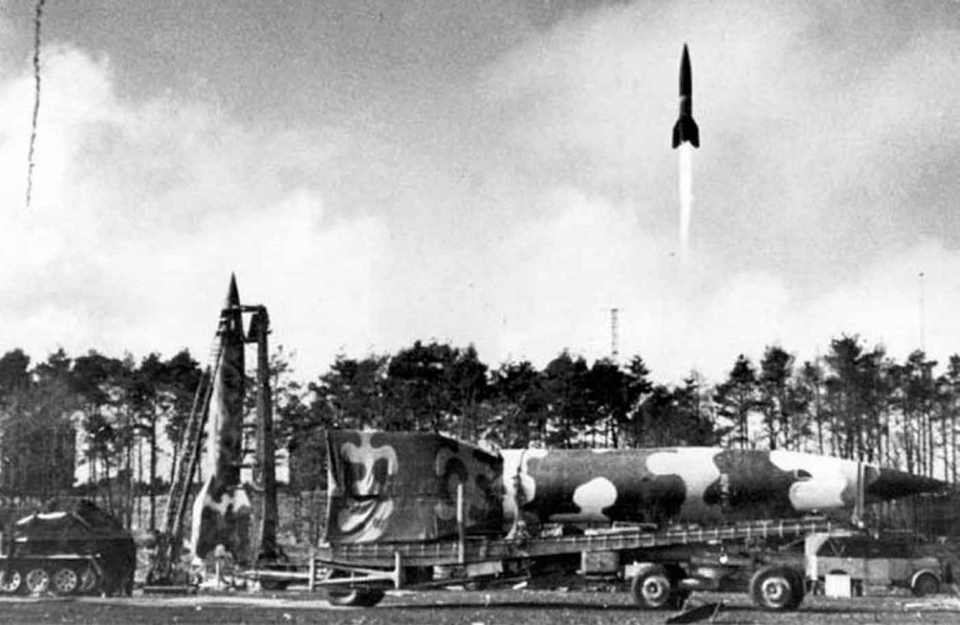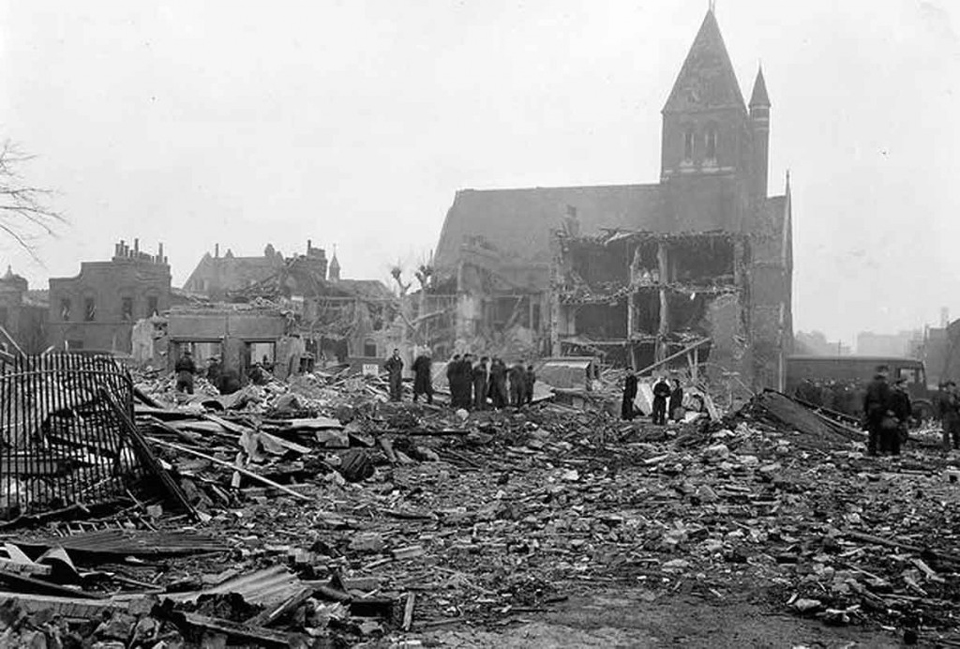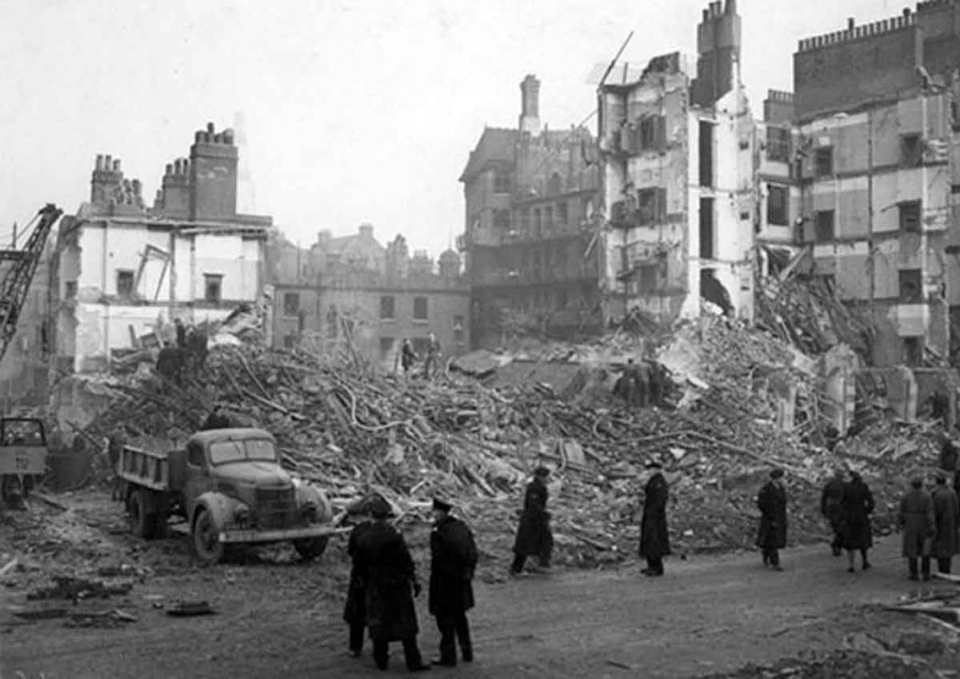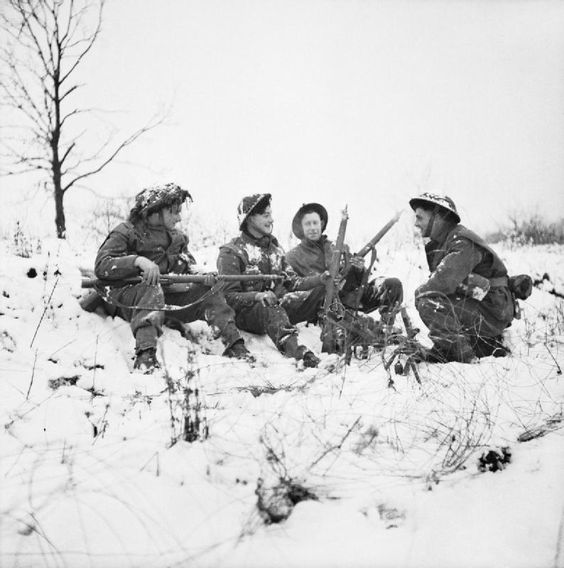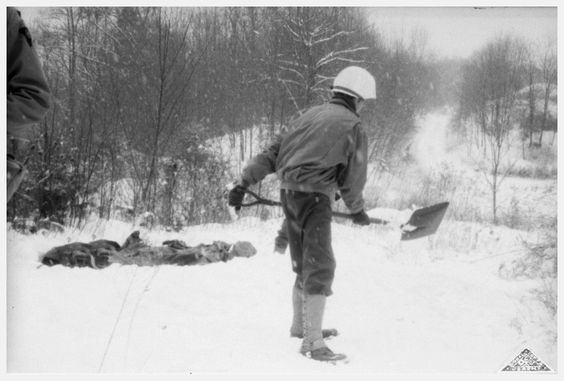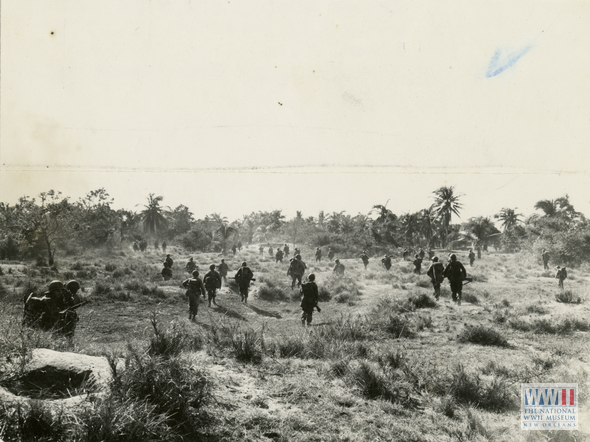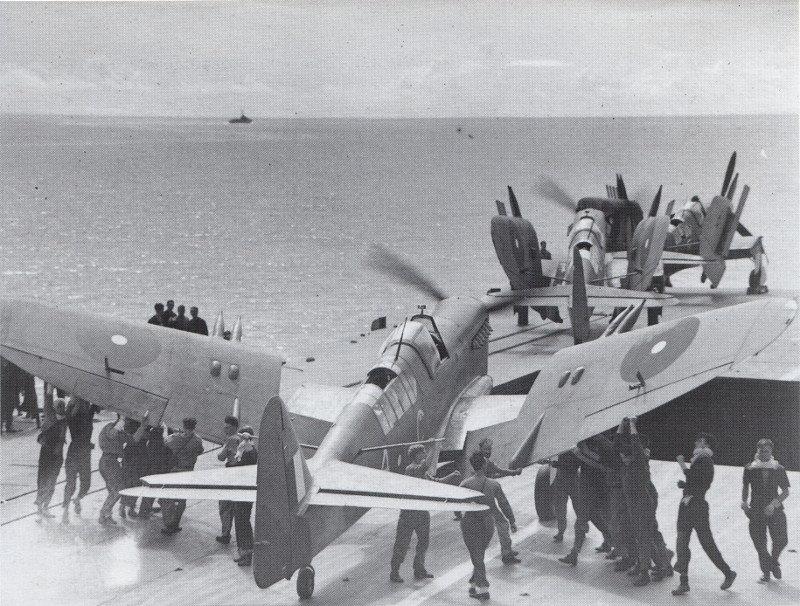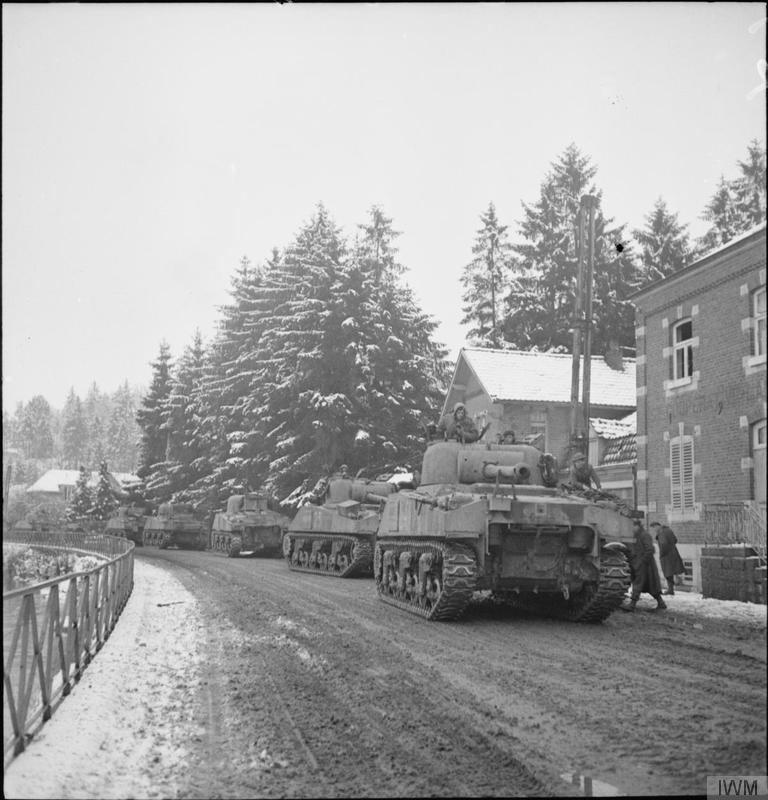Air Operations, CBI
BURMA- 13 10th Air Force B-25s attack the airfield at Namsang.
- 36 10th Air Force P-47s and P-38s attack troops and supplies at 5 locations.
- 12 P-47s attack bridges at 2 locations.
- 6 P-47s attack troops near Twinnge.
- 6 P-47s attack bridging supplies at Na-lang.
- 5 P-47s attack warehouses and motor vehicles at Mogok.
- 6 341st Medium Bomb Group B-25s attack a bridge and several buildings at Kentung.
- 21 14th Air Force P-51s attack targets of opportunity in the Wanling area.
- 4 308th Heavy Bomb Group B-24s attack Fort Bayard and Samah Bay, Hainan.
- 20 14th Air Force fighter-bombers attack targets of opportunity in the Hankow, Lohochai, and Sinyang areas.
- 3rd CACW Fighter Group P-40s down 2 Ki-43 'Oscar' fighters near the airfield at Laohokow at about 0700 hours.
- 8 P-51s attack a bridge at Huizan.
Air Operations, East Indies
- FEAF B-25s and P-38s attack targets on Celebes, and B-25s attack shipyards in northern Borneo.
- Following a sweep by Royal Navy Hellcats and Corsairs, 32 RN Avenger light bombers and 12 rocket-carrying Firefly fighter-bombers dispatched from 3 British Pacific Fleet carriers attack the Pangkalan Bradan refinery on Sumatra. The refinery is severely damaged and 7 Japanese fighters are downed at a cost of 2 airplanes lost in operational accidents. Following the attack, the Royal Navy task force retires to Ceylon.
Air Operations, Europe
RAF BOMBER COMMANDDaylight Ops:
Minor Ops:
- 1 Hudson flies a Resistance operation.
- 347 Lancasters and 7 Mosquitos of Nos. 1, 5 and 8 Groups are sent to attack Royan. This is a tragic raid with a strange and disputed background. Royan was a town situated at the mouth of the Gironde River in which a stubborn German garrison is still holding out, preventing the Allies from using the port of Bordeaux. The task of besieging the town had been given to 12,000 men of the French Resistance commanded by Free French officers appointed by General de Gaulle. The commander of the German garrison recognizes the Resistance units as regular forces and the normal rules of warfare are observed. The French, lacking artillery, make little progress with their siege. The German commander gives the inhabitants of the town the opportunity to leave but many prefer to stay in order to look after their homes. It is believed that there are 2,000 civilians at the time of the raid.
- On 10 December 1944, a meeting took place at the town of Cognac between French officers and an American officer from one of the tactical air force units in France. After a meal, at which much alcohol is supposed to have been consumed, the American officer suggested that the German garrison at Royan should be 'softened up' by bombing. He was assured by the French that the only civilians remaining in the town were collaborators which was not correct. The suggestion that the town be bombed was passed to SHAEF (Supreme Headquarters Allied Expeditionary Force), which decided that the task should be given to Bomber Command: 'To destroy town strongly defended by enemy and occupied by German troops only.' It is said that SHAEF ordered a last-minute cancellation because of doubts about the presence of French civilians but the order, if issued, was not received by Bomber Command in time.
- The attack is carried out by 2 waves of bombers, in good visibility conditions, in the early hours of January 5. 1,576 tons of high-explosive bombs, including 285 'blockbuster' (4,OOOlb bombs), are dropped. Local reports show that between 85 and 90 per cent of the small town is destroyed. The number of French civilians killed is given as '500 to 700' and as '800' by different sources. Many of the casualties happen in the second part of the raid, which takes place an hour after the first and catches many people out in the open trying to rescue the victims of the first wave of the bombing trapped in their homes. The number of Germans killed is given as 35 to 50. A local truce is arranged and, for the next 10 days, there is no fighting while the search for survivors in wrecked houses continued.
- 4 Lancasters are lost and 2 more collide behind Allied lines in France and crash.
- There are many recriminations. Bomber Command is immediately exonerated. The American air-force officer who passed on the original suggestion to SHAEF is removed from his command. The bitterest disputes take place among the Free French officers and accusations and counter-accusations continue for many years after the war. A French general committed suicide. De Gaulle, in his Memoires, blamed the Americans: 'American bombers, on their own initiative, came during the night and dropped a mass of bombs.' The German garrison does not surrender until April 18.
- 66 Mosquitos are sent to Berlin and 7 to Neuss, and there are 2 Halifax RCM sorties.
- There are no losses.
- Some of the Light Night Striking Force (No. 8 Group) Mosquitos which attack Berlin on this night fly 2 sorties each. These Mosquitos take off in the early evening, bomb Berlin, return and change crews, and then fly to Berlin again. This method of augmenting the Mosquito campaign against Berlin is used several times during the long nights of midwinter.
ITALY:
- 12th Air Force B-25s attack two bridges.
- XXII TAC P-47s attack communications targets in the Po River vally and an ammo dump.
- During the night, XXII TAC A-20s attack targets of opportunity around Modena.
ITALY:
- More than 370 15th Air Force heavy bombers attack rail sidings and marshalling yards at seven locations.
- 9 15th Air Force B-24s drop supplies to Yugoslav partisans.
Air Operations, Formosa
Despite bad weather, US Navy and Marine Corps carrier-based aircraft continue to strike at Japanese airfields on Formosa. US Navy F6Fs down 2 A6M Zeros over the island at 0920 hours and a D4Y 'Judy' dive bomber at sea at 1030 hours.
In the face of deteriorating weather, Task Force 38 retires from the Formosa area during the afternoon. A total of 22 carrier aircraft have been lost from all causes during the two-day operation.
[Air Operations, Pacific
The Americans bomb Clark Field, Manila.
[Air Operations, Philippines
- Japanese land-based aircraft, including many kamikaze aircraft, attack two elements of the US 7th Fleet’s 800-ship Luzon invasion force, which is advancing through Lingayen Gulf. At about 1715 hours, the escort carrier USS Ommaney Bay is mortally damaged in the Sulu Sea by a P1Y 'Galaxy' suicide bomber and must be abandoned and scuttled by torpedoes. 93 crewmen are killed and 65 are wounded. Also, a US cruiser and 2 destroyers are severely damaged by kamikazes.
- At 1730 hours, a kamikaze vaporizes an ammunition ship and its 71-man crew off Mindoro. The bombs aboard the ship were to have made good the losses aboard another ammunition ship that was sunk by Japanese aircraft on December 28. This is the last Japanese air attack against targets in the Mindoro area—because better targets are now available off Luzon.
- A single Japanese bomber attacks VPB-137 on the ground at Tacloban airfield on Leyte and destroys 11 of the squadron’s 12 PVs.
- 22nd Heavy Bomb Group B-24s attack Clark Field, Luzon.
- FEAF B-24s attack Puerto Princesa on Palawan and mount small attacks against airfields in southern Luzon, Mindanao, and the central Philipines.
- V Bomber Command B-25s attack rail and highway targets near San Pedro.
- 345th Medium Bomb Group B-25s attack the Porac and Floridanblanca airfields on Luzon.
- 15 110th Tactical Reconnaissance Squadron P-40s partially block Balete Pass on Luzon with landslides started with 500-pound bombs.
- A 418th Night Fighter Squadron P-61 downs an E13A 'Jake' reconnaissance plane near Ilin Island at 0330 hours and another 'Jake' near the San Jose airfield on Panay at 0412 hours.
- A 58th Fighter Group P-47 downs a D4Y 'Judy' dive bomber near Mindoro at 1020 hours.
- A 475th Fighter Group P-38 downs an A6M Zero over Luzon at 1150 hours.
- A 58th Fighter Group P-47 downs an A6M Zero near Cuyo Island at 1715 hours.
Air Operations, Volcano Islands
- 13 VII Bomber Command B-24s attack Iwo Jima.
- During the night, 10 VII Bomber Command B-24s conduct snooper raids against Iwo Jima.
Burma
The British XV Corps completes the occupation of Akyab, an important air and naval base on the Arakan coast. Further east, the American 475th Regt crosses the Shweli River, while the American 124th Cav waits for reinforcements to be dropped by parachute before carrying out the crossing.
While the Allies in central Burma have been making progress toward Mandalay, XV Corps is pursuing Operation TALON, driving farther down into the Arakan and aiming for the port of Rangoon.
[Eastern Front
German troops attempt but fail to fight their way out of Budapest.
[Indian Ocean
3 British carriers of Adm Vian's TF 63 attack the oil refineries at Pankalan Brandan on Sumatra.
[Pacific
- By the time its series of attacks is finished Vice-Adm Mitscher's squadron, despite unfavorable weather, has sunk 12 ships and damaged 28; it has also shot down 110 Japanese aircraft for the loss of 18 US planes.
- The Japanese army vessel No.15 Horikoshi Maru is sunk by mine off the northeast shore of Mukai Jima.
- The Japanese submarine chaser No. 210 is sunk by US aircraft in the Formosa Strait.
Philippines
Japanese aircraft attack the American ships on their way to the Gulf of Lingayen, Luzon. The escort carrier Ommaney Bay (CVE-79) is damaged by a suicide aircraft so seriously that is has to be sunk. The destroyer Bell (DD-587) and the tanker Pecos (AO-65) are also badly damaged.
On Leyte Island the X Corps of the US 8th Army completes its operations. Japanese aircraft are active again at Mindoro, where they sink a US ship loaded with ammunition.
[Western Front
The British XXX Corps, 2nd Army, launches its offensive in the western sector of the Ourthe River.
In the US 3rd Army sector, the advance of the divisions of the VIII and III Corps is brought to a halt in the area of Pironpré, Rechrival and Hubermont and east of Bastogne, in the Mageret-Warden sector.
On the right flank of the front, where the US 7th Army is operating, the 45th Div, VI Corps, continues its thrusts in the direction of Wingen to eliminate the Bitche salient.
Hitler agrees the Gen Sepp Dietrich's 6th SS Panzer Div may be withdrawn from the Eifel area, reinforced and then sent to the Eastern front, where a massive Russian offensive is expected. The sector is handed over to the 5th Panzer and 7th Armies.
[Images from January 4, 1945
|
|
|
|
|
|
|
|
